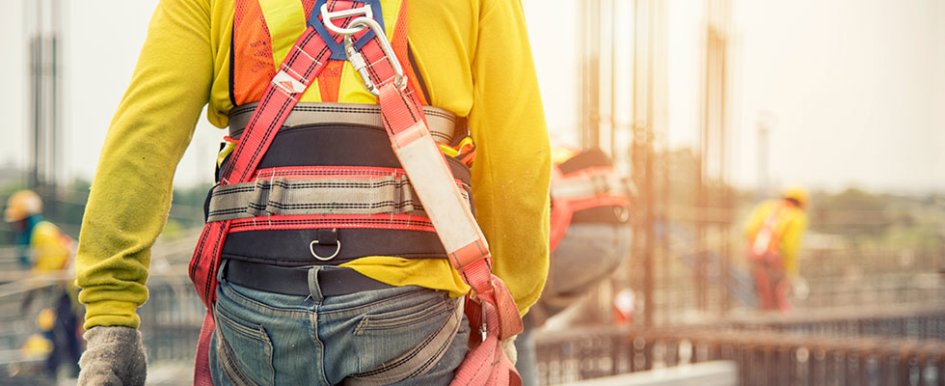
Recent market developments and research point to a need for more effective safety training for construction workers. Associated Builders and Contractors estimates that the construction industry will need to hire 650,000 new workers in 2022 to keep up with demand.
Meanwhile, new employees have high rates of workplace injuries and the lag between the hiring of an employee and their first injury declined by an average of 202 days between 2011 and 2021.
Effective safety training is imperative given the hazards inherent in most construction sites. Here are recommendations to help identify the employees who will benefit most from focused training, the main topics you should cover and some approaches to imparting training that sticks.
Candidates for Training
According to one insurance company’s research, 40% of workers’ compensation claims filed with them between 2011 and 2021 from construction firms were for employees on the job one year or less. In fact, during one specific year in that period, claims from first-year employees made up 48% of such claims.
Changes in the construction labor market predict that the number of new employees in the field will only grow. In 2017, the National Center for Construction Education & Research estimated that 41% of the construction workforce will retire by 2031. The Great Resignation could very well accelerate this trend, and, if that is the case, newcomers will replace many of the retiring workers.
Further, the rollout of the bipartisan infrastructure bill will likely increase demand for labor, leading to more new entrants into the workforce.
New employees account for two out of every five injuries considered significant enough to warrant an insurance claim, which shows that the group would benefit from increased or more effective safety education. This highlights the importance of providing robust risk and safety training to new workers To make your safety training more effective, include existing employees who recently moved to new positions in your organization.
These employees will likely be learning new procedures and handling different equipment and materials in their new roles. They will need to understand the new safety risks they face and should be trained as new employees.
Safety Training Topics
The list of safety education topics can be long, but a few key areas require focus.
The three most common types of workers compensation claims are strains, falls/slips and cuts/punctures/scrapes. To reduce these injuries, it’s imperative to include topics like material handling, working at heights and hand safety in your safety education.
Strains, the number one injury type in the research, fall into the category of injuries called musculoskeletal disorders (MSDs). Some of the most common MSDs are strains to the back, shoulder and wrist muscles.
These strains can occur when a worker performs a task that requires consistent application of high levels of force, twisting their body into awkward positions, handling vibrating tools or repeating the same motion for extended periods. Your training should address proper ways to execute such tasks safely.
Suggested Approaches to Training
Many people learn best by observing and doing. One of the most successful formats for educating employees about safety with new tasks, materials and equipment is to tell them, show them, have them tell you and have them show you.
Safety training should begin with 30-, 60- and 90-day checklists of subjects included in the employee onboarding process. Initial training should be provided by a manager or work leader who can observe and coach the employee at the jobsite.
Each employee should be paired with a buddy or mentor who can reinforce their new learning on an ongoing basis. This continuous feedback helps turn good safety practices into habits that can be instantly recalled when needed.
Comprehensive reviews should follow onboarding after a six-month period and a one-year period. Be sure to ask the employee for any safety-related insights they may have gained.
Questions like, “What do you wish I had trained you on?” and “What was unclear during the onboarding process?” can reveal opportunities to strengthen your safety training programs.
Input from employees during the reviews may give you fresh perspectives on how you can reduce or eliminate MSDs, the top source of workers compensation claims.
Stay abreast of trends in technology and its applicability for training employees and monitoring worksite safety. For example, wearables can track workers and help managers correct risky behavior, such as jumping into a trench instead of climbing down a ladder. The use of e-learning tools and virtual- or augmented-reality training is gaining wider acceptance, especially for higher-hazard tasks.
Documentation
Documenting the risk and safety management training you have provided to employees is important for several reasons. Documentation enables you to
spot gaps in employees’ knowledge, determine schedules for refresher education and help employees with career development.
Additionally, it helps you respond to any inquiries from regulators about employee safety.
It is a good practice to ask employees to sign safety training documentation. Signing the documents validates that they received the training and makes them active participants in your safety systems.
A Culture of Safety
Your onboarding process for new employees and job roles should be part of a broader culture of safety that permeates every level of your organization.
Strive to create a culture where employees understand how important safety protocols and techniques are to your firm from their first day. Develop an atmosphere where people feel comfortable asking questions and learning from managers and peers. Communicate the importance of safety consistently over the long term.
Better safety leads to greater productivity. Clients and employees like working with firms that prize safety. Set the bar high, and it will help you build a positive culture that will extend to every project and every site where your employees work.
